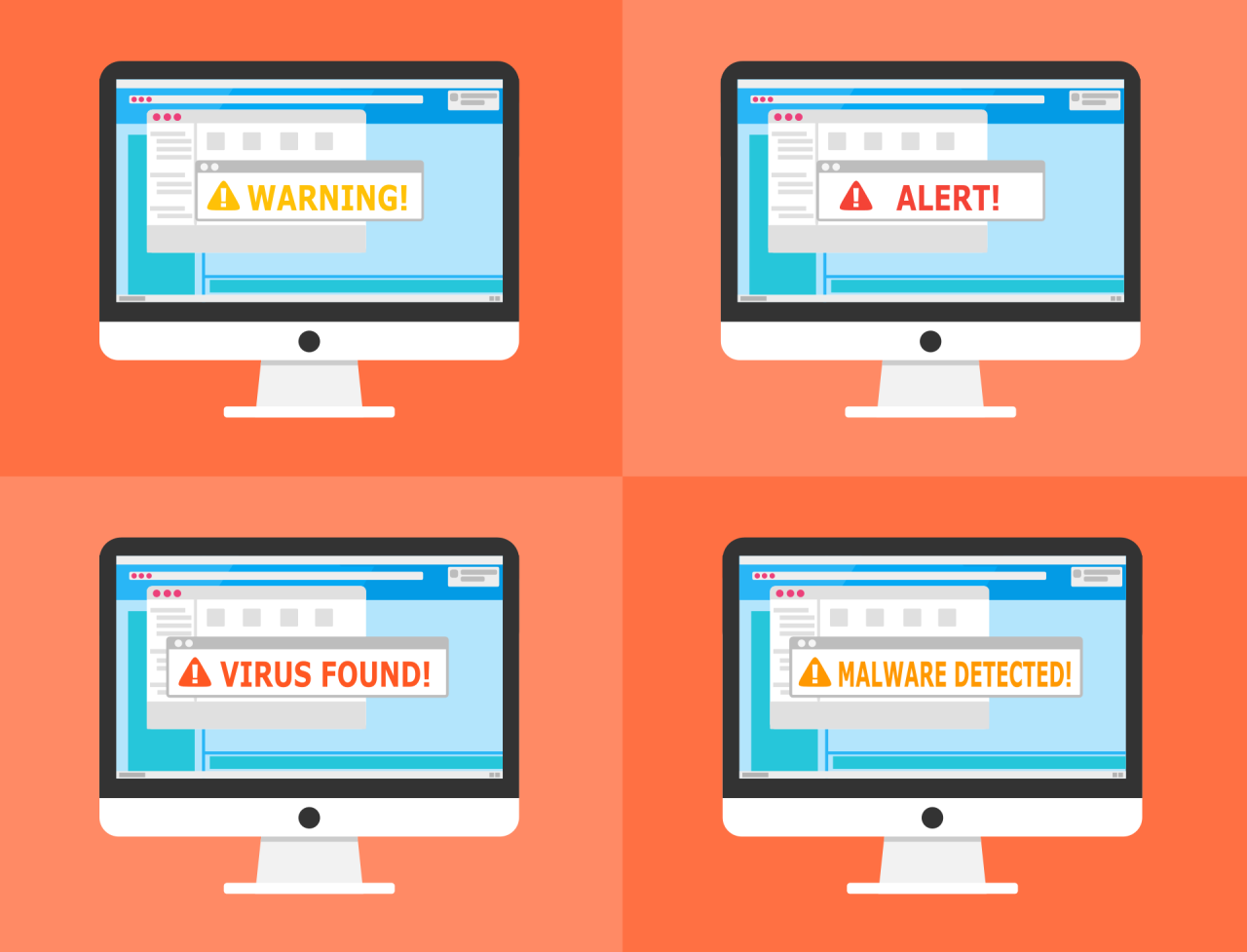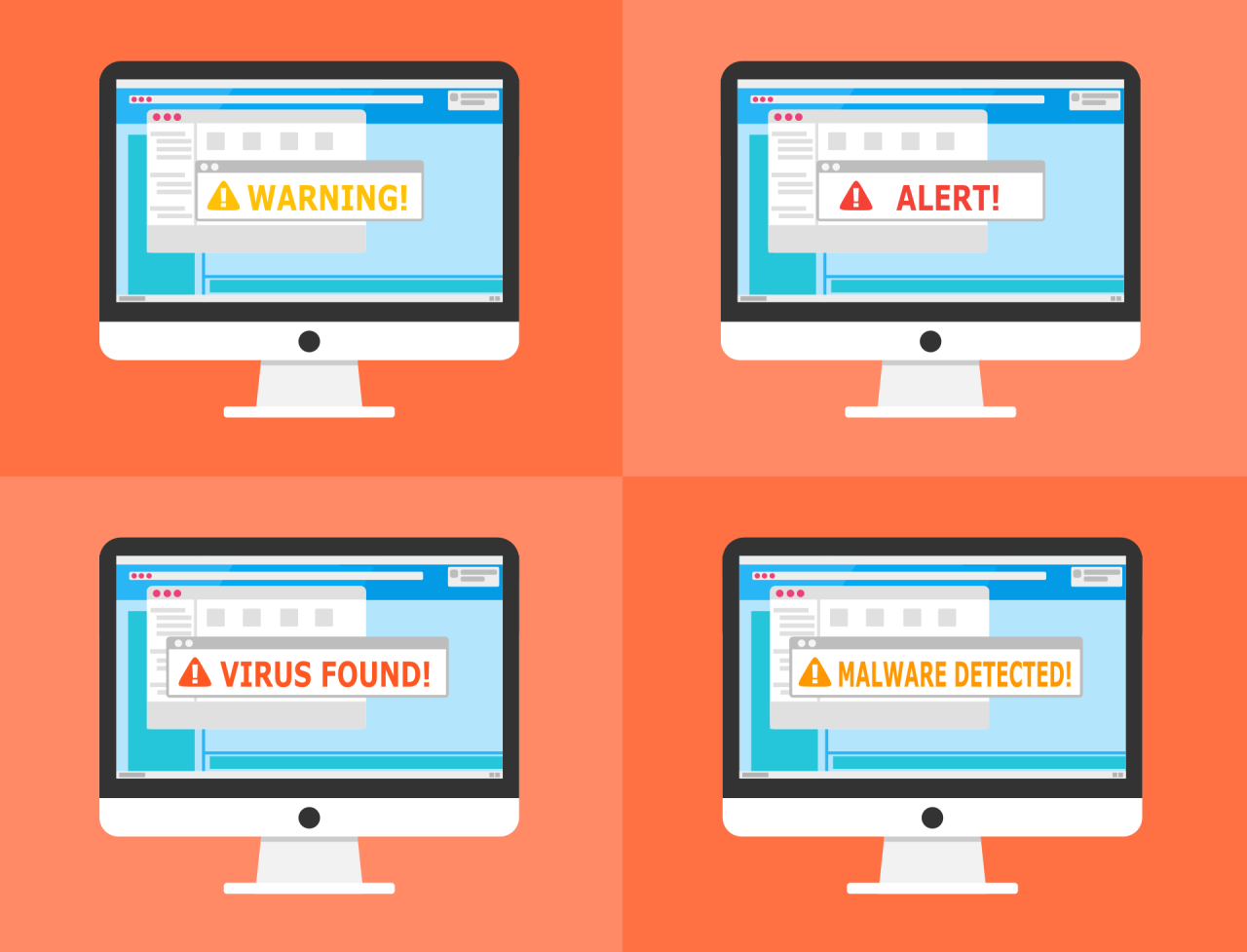New Era of Deadly Spyware Approaches
New era of deadly spyware approaches, a chilling preview of a future where digital espionage is more potent and insidious than ever before. This new generation of spyware is no longer just about stealing data; it’s about manipulating, controlling, and even potentially eroding the very fabric of our digital lives. We’re delving deep into the technological advancements, evolving tactics, and potential consequences of this unsettling reality.
The historical evolution of spyware, from rudimentary keyloggers to sophisticated AI-powered surveillance tools, is examined in detail. This evolution highlights the alarming trend of escalating sophistication and the increasing accessibility of these tools. The article will also explore the different actors involved in the development and deployment of this new spyware, from state-sponsored groups to criminal organizations. Furthermore, the potential vulnerabilities in current security systems and the devastating impact on individuals and society are explored.
This includes examining the potential for misuse by governments and corporations, and the implications for global security and international relations.
Defining the “New Era”
The landscape of digital threats has undergone a dramatic evolution, with spyware emerging as a potent tool for espionage and malicious activities. From rudimentary keyloggers to sophisticated surveillance networks, the evolution of spyware mirrors the accelerating pace of technological advancement. This new era of spyware represents a significant escalation in capabilities, sophistication, and the potential for widespread harm.This escalation is driven by advancements in computing power, data analysis, and the sheer interconnectedness of modern life.
These advancements have not only empowered malicious actors but have also created new avenues for exploiting vulnerabilities, leading to a qualitatively different threat landscape than previously seen. The consequences of this new era extend far beyond individual privacy violations, potentially impacting national security, economic stability, and global geopolitical dynamics.
Historical Context of Spyware Evolution
Spyware’s roots trace back to the early days of the internet, with rudimentary keyloggers and data-stealing programs appearing in the 1990s. These early forms of spyware were often simple and focused on gathering basic information, like usernames and passwords. As technology advanced, so did the sophistication of the tools, evolving from simple data extraction to more complex systems capable of monitoring and controlling targets’ activities.
This evolution demonstrates a clear progression from basic data theft to sophisticated surveillance capabilities.
Key Technological Advancements
Several key technological advancements have fueled the “new era” of spyware. These include advancements in artificial intelligence (AI) enabling more sophisticated analysis of data and the development of machine learning algorithms that allow for more targeted and personalized attacks. The rise of cloud computing has provided vast storage and processing power, enabling more complex data collection and analysis, which has led to a new generation of surveillance tools capable of deep analysis of human behavior.
Furthermore, advancements in encryption techniques, while generally beneficial, also provide a basis for more sophisticated and obfuscated spyware implementations, adding another layer of complexity to detection and mitigation efforts.
Capabilities of Current Spyware
Current spyware often surpasses previous generations in its capabilities. Advanced spyware tools can now not only capture keystrokes and monitor online activity but also intercept communications, track location, and even manipulate devices remotely. The use of AI-powered analysis allows for the identification of patterns in user behavior, enabling more effective targeting and data collection. This is a stark contrast to earlier generations of spyware, which were often limited in scope and less sophisticated in their targeting strategies.
Furthermore, the integration of sophisticated algorithms permits near real-time data analysis, leading to more responsive and adaptive attacks.
Shift in Tactics and Motivations
The motivations behind spyware development and use have also evolved. While financial gain remains a significant driver, the current era sees a greater emphasis on espionage, political manipulation, and even organized crime. The ability to collect and analyze vast amounts of data allows for more targeted and effective campaigns of influence and manipulation, often directed at individuals, organizations, and even entire nations.
This shift reflects a move from purely opportunistic attacks to more strategic and targeted campaigns.
Progression of Spyware
| Generation | Key Features | Impact |
|---|---|---|
| Early Spyware (1990s) | Basic keyloggers, data theft. | Limited surveillance capabilities, primarily focused on individual data theft. |
| Advanced Spyware (2000s-2010s) | Remote access, monitoring, sophisticated data collection. | Increased surveillance capabilities, targeting specific individuals and organizations. |
| New Era Spyware (2020s) | AI-powered analysis, machine learning, targeted campaigns, sophisticated remote control. | Significant escalation in capabilities, enabling more effective and impactful surveillance, and potential for geopolitical manipulation. |
Emerging Threats and Techniques
The landscape of digital espionage is constantly evolving, with each new generation of spyware surpassing the previous one in sophistication and stealth. This “new era” is characterized by a blurring of lines between state-sponsored actors and private criminal organizations, all seeking to exploit vulnerabilities in increasingly complex digital ecosystems. The motivations vary, from national security concerns to financial gain, but the outcome remains the same: the potential for significant damage to individuals and institutions.The actors behind these sophisticated attacks are multifaceted.
State-sponsored groups, often operating under the guise of intelligence agencies, are driven by geopolitical objectives. Criminal organizations, motivated by financial gain, are increasingly leveraging advanced tools to target individuals and businesses. Cybercrime as a service models further amplify the threat, enabling less technically proficient actors to execute sophisticated attacks.
Primary Actors in Spyware Development and Deployment
The primary actors in developing and deploying this new spyware are diverse and include state-sponsored groups, criminal organizations, and even individuals or groups working as part of cybercrime as a service. These actors are often well-resourced and possess advanced technical capabilities, enabling them to circumvent traditional security measures.
Evolving Methods of Infiltration and Data Collection
Methods of infiltration and data collection are continually evolving. Traditional methods like phishing and malware remain prevalent, but they are increasingly combined with advanced techniques like social engineering, exploiting zero-day vulnerabilities, and leveraging compromised credentials. The sophistication of these techniques often involves the use of AI and machine learning to personalize attacks and evade detection. This allows for more targeted and effective collection of sensitive data.
For example, attackers may use AI-powered chatbots to gain access to personal information through deceptive interactions.
Sophistication of Targeting Methods
Modern spyware attacks demonstrate remarkable sophistication in targeting methods. Attackers are no longer simply casting a wide net, but are meticulously identifying and profiling their targets. This includes leveraging open-source intelligence (OSINT) to gather information about individuals or organizations. Advanced techniques such as exploiting social engineering vulnerabilities in conjunction with sophisticated malware deployment allow for targeted and highly effective infiltration.
For example, attackers might use publicly available information about a target’s professional or personal life to tailor a phishing email to exploit their specific vulnerabilities.
Vulnerabilities in Existing Security Protocols and Systems
Existing security protocols and systems face significant vulnerabilities in the face of this new generation of spyware. The increasing complexity of software, the proliferation of interconnected devices, and the evolving nature of attacks create gaps that can be exploited. A critical weakness lies in the often-unpatched vulnerabilities in widely used software and operating systems, and the challenges of keeping pace with the ever-changing threat landscape.
Comparison of Spyware Types and Attack Vectors
| Spyware Type | Description | Attack Vector |
|---|---|---|
| Keyloggers | Record keystrokes for password and data theft. | Phishing emails, malicious websites, infected software. |
| Remote Access Trojans (RATs) | Grant attackers complete control over a compromised system. | Exploiting vulnerabilities in software, malicious downloads. |
| Mobile Spyware | Track mobile device activities, including location, contacts, and messages. | Malicious apps disguised as legitimate ones, exploiting vulnerabilities in mobile operating systems. |
| System Monitoring Tools | Collect data on system activity, such as browsing history, and application usage. | Malware infections, social engineering, zero-day vulnerabilities. |
This table provides a concise overview of different spyware types and their respective attack vectors. The methods used to deploy these different types of spyware vary, but the goal remains consistent: to gain unauthorized access and collect sensitive information.
Impact on Individuals and Societies
The proliferation of sophisticated spyware presents a grave threat to individual privacy, freedom, and societal well-being. These advanced tools, capable of deep infiltration and data extraction, erode the fundamental trust between citizens and their governments, and between individuals and corporations. The potential for misuse is vast, demanding a proactive and comprehensive response.Sophisticated spyware, designed with near-perfect concealment, can extract vast amounts of personal data, including browsing history, communications, location data, and even sensitive financial information.
This unchecked access undermines individual privacy, making individuals vulnerable to manipulation, blackmail, and targeted attacks. Furthermore, the potential for governments or corporations to utilize this technology for mass surveillance raises profound ethical concerns and poses a significant risk to democratic principles.
Potential Consequences of Widespread Use
The widespread adoption of sophisticated spyware can have devastating effects on individuals and societies. It can lead to a chilling effect on free speech and dissent, as individuals fear retribution for expressing their opinions. Furthermore, the ability to monitor and manipulate individuals can be exploited for malicious purposes, potentially destabilizing societies and leading to widespread social unrest.
Impact on Individual Privacy and Freedom of Expression
The use of sophisticated spyware severely impacts individual privacy and freedom of expression. Individuals are constantly vulnerable to surveillance, their communications intercepted, and their movements tracked. This pervasive monitoring can create a climate of fear, stifling dissent and hindering open dialogue. The ability to gather and analyze personal data in real-time enables manipulation and control, potentially leading to a loss of individual agency and autonomy.
The very act of expressing dissenting opinions or criticizing authority figures could become a high-risk activity.
Potential for Misuse and Abuse by Governments or Corporations
The potential for misuse and abuse of sophisticated spyware by governments and corporations is significant. Governments could utilize these tools for mass surveillance, silencing opposition, and suppressing dissent. Corporations might employ them to monitor employees, gather competitive intelligence, or exploit personal data for financial gain. Such abuses undermine democratic processes, erode public trust, and create an environment of fear and intimidation.
The lack of accountability and oversight for these technologies presents a substantial risk to fundamental human rights.
Potential Implications for International Relations and Global Security
The deployment of sophisticated spyware across international borders can significantly impact international relations and global security. It could lead to accusations of espionage, undermine diplomatic efforts, and escalate tensions between nations. The potential for targeted attacks on political leaders, activists, and journalists further complicates international relations, fostering distrust and conflict. Furthermore, the ability to collect intelligence from individuals across borders raises concerns about the potential for misuse and manipulation in international affairs.
Societal Ramifications of New Spyware Approaches
| Aspect | Potential Ramifications |
|---|---|
| Individual Freedom | Erosion of individual privacy, chilling effect on free speech, and potential for manipulation and blackmail. |
| Democratic Processes | Undermining of democratic principles, suppression of dissent, and potential for manipulation of elections. |
| International Relations | Escalation of tensions, accusations of espionage, and potential for conflict between nations. |
| Global Security | Increased risk of targeted attacks, vulnerability to cyber warfare, and potential for destabilization. |
| Economic Stability | Potential for misuse for competitive intelligence, exploitation of personal data for financial gain, and disruption of economic activities. |
Countermeasures and Defenses
The escalating sophistication of spyware necessitates a multifaceted approach to defense. Simply reacting to attacks is no longer sufficient; proactive measures and a deep understanding of emerging threats are crucial for safeguarding individuals and organizations. This section explores current countermeasures, the importance of vigilance, and the future of security technologies in the face of evolving spyware tactics.Effective countermeasures require a combination of technical tools, security awareness, and a commitment to continuous improvement.
Protecting against these advanced threats necessitates a shift from reactive to proactive strategies. This means staying informed about the latest techniques and implementing robust security measures before an attack occurs.
Current Detection and Mitigation Methods
Various methods are employed to detect and mitigate spyware threats. These include signature-based detection, which identifies known malicious code patterns, and heuristic analysis, which looks for suspicious behaviors. Behavioral monitoring tools track unusual activities on a system, while sandboxing techniques isolate potentially harmful software to observe its actions without affecting the host system.
Importance of Proactive Security Measures and Awareness
Proactive security measures, coupled with user awareness, are paramount in preventing spyware infections. Regular software updates, strong passwords, and cautious online behavior are fundamental. Users should be educated about phishing attempts, suspicious links, and the importance of verifying the authenticity of websites and downloads. Employing multi-factor authentication strengthens security and mitigates the impact of compromised credentials.
This new era of deadly spyware approaches feels eerily reminiscent of the most destructive viruses of all time. Think about the havoc those malicious programs wreaked, and how they compare to today’s sophisticated spying tools. The most destructive viruses of all time left a trail of destruction, and the current spyware, with its focus on stealth and data theft, is certainly a cause for concern.
It’s a worrying trend, as this new breed of spyware raises the stakes for digital security.
Emerging Technologies for Protection
Emerging technologies are continually developing to address the evolving landscape of spyware threats. Machine learning algorithms are being integrated into security systems to identify and respond to previously unknown malicious patterns. Zero-trust security models are gaining traction, limiting access to resources based on the identity and context of users and devices. AI-powered threat intelligence platforms are proactively identifying and analyzing new threats before they cause damage.
Potential Gaps in Current Defense Mechanisms
Despite advancements, gaps remain in current defense mechanisms. The sheer volume of evolving malware and the rapid development of new attack vectors can overwhelm traditional detection systems. The constant emergence of polymorphic malware, which changes its code to evade detection, poses a significant challenge. Furthermore, the increasing use of encrypted communication channels makes detecting malicious activity more difficult.
The new era of deadly spyware approaches is concerning, especially given recent developments. Verisign’s selection to run the RFID root directory, as detailed in verisign chosen to run rfid root directory , raises serious questions about potential vulnerabilities. This could significantly impact the security landscape, making it easier for malicious actors to exploit these systems, thus further enhancing the threat posed by the new era of deadly spyware approaches.
Sophisticated obfuscation techniques used in spyware are making it harder for traditional methods to identify them.
The new era of deadly spyware approaches is truly concerning. It’s a constant race, with hackers constantly developing new techniques. Interestingly, Cray’s purchase of Octigabay, aiming at supercomputing low end ( cray buys octigabay aims at supercomputing low end ), might ironically provide a counter-measure for future spyware development, indirectly helping security researchers. This is a complex interplay, and the future of digital security is still uncertain.
Comparison of Security Measures
| Security Measure | Description | Effectiveness | Limitations |
|---|---|---|---|
| Signature-based Detection | Identifies known malware signatures. | High effectiveness against known threats. | Ineffective against zero-day exploits and polymorphic malware. |
| Heuristic Analysis | Detects suspicious behaviors. | Moderate effectiveness, identifies potentially malicious activities. | Can generate false positives and may miss sophisticated attacks. |
| Behavioral Monitoring | Tracks unusual system activities. | High effectiveness against stealthy malware. | Requires extensive data analysis, prone to false positives. |
| Sandboxing | Isolates software to observe its behavior. | Effective in identifying malicious code. | Can be resource-intensive and may not detect all attacks. |
| Machine Learning | Identifies new and unknown malware patterns. | High potential effectiveness, but requires training data. | Can be vulnerable to adversarial attacks and require constant updates. |
Ethical and Legal Considerations
The proliferation of advanced spyware raises profound ethical and legal concerns. The ability to surreptitiously monitor individuals’ activities, collect sensitive data, and potentially manipulate behavior presents a significant threat to privacy, autonomy, and fundamental human rights. Balancing national security interests with individual liberties becomes a complex challenge in this new era of digital surveillance.
Ethical Dilemmas Surrounding Spyware Use
The use of advanced spyware is fraught with ethical dilemmas. Surveillance, even for legitimate purposes, can erode trust and create a climate of fear. The potential for misuse and abuse, whether intentional or accidental, necessitates a careful consideration of the ethical implications. Privacy violations, potential for psychological harm, and the chilling effect on free expression are all critical considerations.
Furthermore, the power imbalance inherent in the deployment of such technologies raises concerns about the potential for abuse by those in positions of authority.
Examples of Legal Frameworks Addressing Spyware Use
Existing legal frameworks often struggle to keep pace with the rapid evolution of spyware technologies. Laws concerning surveillance, data protection, and electronic communication are frequently inadequate in addressing the unique challenges posed by advanced spyware. Some jurisdictions have specific regulations regarding the use of spyware for law enforcement purposes, but these often lack clarity and fail to adequately address the complexities of private sector use or the collection of personal data from individuals outside the jurisdiction.
The lack of global standards makes cross-border enforcement and cooperation extremely difficult.
Potential for Misuse and Abuse of Spyware, New era of deadly spyware approaches
The potential for misuse and abuse of spyware is significant. Malicious actors can exploit these technologies for espionage, blackmail, extortion, and even political manipulation. Examples include the targeting of political opponents, journalists, and activists. Furthermore, the use of spyware by corporations for competitive intelligence or employee monitoring raises concerns about the erosion of employee privacy and the potential for unfair labor practices.
Need for International Cooperation and Standards for Regulating Spyware
International cooperation is crucial for establishing clear standards and regulations for the development, use, and export of spyware. A lack of consistent international standards allows for the development and proliferation of spyware without adequate safeguards. Without international cooperation, malicious actors can easily exploit loopholes and operate across borders, making accountability and enforcement incredibly difficult.
Table Outlining Different Legal Perspectives on Spyware Use
| Legal Perspective | Key Considerations | Potential Concerns |
|---|---|---|
| National Security | Balancing national security interests with individual rights. Focus on counter-terrorism and preventing crime. | Potential for overreach, targeting of innocent individuals, and suppression of dissent. |
| Data Protection | Protecting individuals’ personal data and ensuring transparency in data collection and usage. | Difficulty in defining acceptable uses of data, challenges in enforcement across jurisdictions. |
| Human Rights | Respecting fundamental human rights, such as privacy, freedom of expression, and freedom of assembly. | Potential for spyware to be used to violate these rights, difficulty in determining the extent of the violation. |
| International Law | Establishing common principles and standards for the development and use of spyware. | Challenges in achieving consensus, enforcement mechanisms. |
Future Trends and Predictions

The landscape of spyware is constantly evolving, driven by advancements in technology and the ever-increasing sophistication of cybercriminals. Predicting the future is inherently challenging, but by analyzing current trends, we can glimpse potential developments and anticipate the emerging threats. Understanding these trends is crucial for developing proactive defenses against the ever-evolving nature of malicious software.The rapid development of artificial intelligence (AI) and machine learning (ML) is a significant factor shaping the future of spyware.
AI-powered tools can enhance the stealth and effectiveness of spyware, making it harder to detect and remove. These technologies can be used to create more sophisticated targeting mechanisms, adapting to user behavior in real-time and evading traditional security measures. This necessitates a shift in cybersecurity strategies to anticipate and counter these advanced capabilities.
Potential Developments in Spyware Technology
Current spyware often relies on vulnerabilities in operating systems and applications. Future spyware may exploit vulnerabilities in emerging technologies like blockchain, IoT devices, and quantum computing. This represents a significant shift in the threat landscape, as these new technologies have unique security considerations and potential entry points for attackers. This evolution demands a proactive approach to security, incorporating robust testing and validation for these emerging technologies.
Potential Scenarios for Cyber Warfare and Espionage
Cyber warfare could escalate to encompass more targeted and devastating attacks. Imagine scenarios where critical infrastructure is disrupted through sophisticated spyware, causing widespread damage and economic disruption. State-sponsored espionage will likely leverage AI-enhanced spyware to target specific individuals or organizations, stealing intellectual property or compromising sensitive data. Such scenarios highlight the importance of robust international cooperation and information sharing to combat these sophisticated attacks.
Emerging Threats and Vulnerabilities
The increasing interconnectedness of systems through the Internet of Things (IoT) creates new vulnerabilities. Malicious actors could exploit vulnerabilities in IoT devices to gain access to networks and deploy spyware on a massive scale. This represents a new front in cyber warfare, where widespread damage can be inflicted through the exploitation of numerous interconnected devices. Robust security protocols and rigorous testing of IoT devices are crucial to mitigating this risk.
Need for Ongoing Vigilance and Adaptation in Cybersecurity
Cybersecurity is not a static field; it requires constant adaptation and vigilance. Future threats will likely demand a more proactive and dynamic approach to security, encompassing advanced threat detection, automated response systems, and proactive vulnerability management. This continuous adaptation is critical for maintaining a secure digital environment in the face of evolving threats. This requires constant research and development in cybersecurity technologies, coupled with continuous education and training for security professionals.
Adapting to Future Threats
Individuals, organizations, and governments must work together to prepare for these evolving threats. Individuals should practice strong password hygiene, avoid suspicious links, and install up-to-date security software. Organizations should implement robust security protocols, conduct regular security assessments, and invest in advanced threat detection systems. Governments need to establish clear legal frameworks, promote international cooperation, and invest in cybersecurity research and development to effectively counter these threats.
This collaborative effort is crucial for safeguarding digital infrastructure and mitigating the potential damage of advanced spyware.
Final Summary: New Era Of Deadly Spyware Approaches

In conclusion, the new era of deadly spyware approaches demands a proactive and multifaceted response. While the technology is rapidly advancing, so too must our defenses. We need to be vigilant about potential vulnerabilities, strengthen existing security protocols, and promote international cooperation to combat this growing threat. Ultimately, understanding the implications of this technology is critical for safeguarding our digital freedoms and ensuring a secure future.







